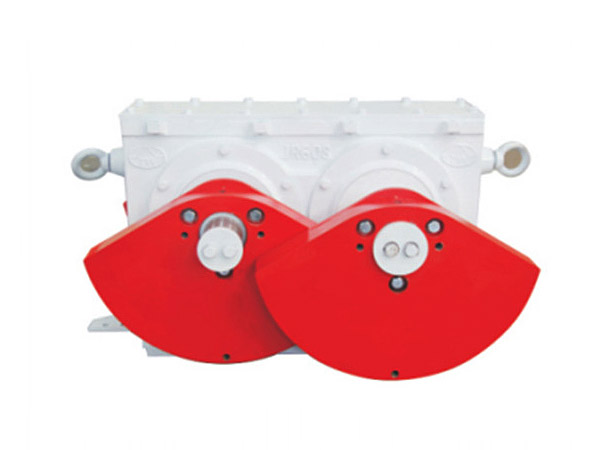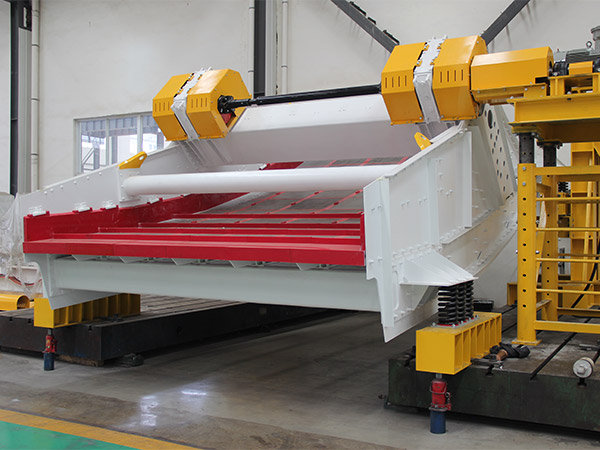Safety Operation Regulations for High Frequency Dewatering Vibrating Screen
The safety operating procedures of the high-frequency dewatering vibrating screen should be familiar with the process flow and equipment control of the system to ensure the standard operation and regular maintenance. The vibrating screen should be overhauled once a year, and the overall parts should be carefully inspected, and the necessary parts should be checked carefully. Achieve timely replacement. Some safety operating procedures given by the vibrating screen manufacturer, I hope it will be helpful to everyone.
Instructions for safe operation of high-frequency dewatering vibrating screen
1. Must be familiar with the use range and technical performance parameters of the equipment.
2. It is necessary to have sufficient understanding and mastery of the structure, principle and common sense of maintenance of the equipment.
3. Familiar with the process flow and equipment control of this system.
The inspection before the start-up of the high-frequency dehydration vibrating screen
1. Check the area around the equipment to ensure that no people are stranded to avoid personal injury when starting up.
2. Follow the sequence of the process system to ensure that the empty screen is started and all safety equipment is in a safe and operable state.
3. Check whether the feeding and discharging chute and the chute under the screen are unblocked.
4. Check whether the sieve plate and bead bolts are loose, and the wear of the sieve plate.
5. Check whether the V-belt and flexible sheet are intact, whether the tightness is appropriate, whether there is any damage, if any, replace it in time.
6. Check the connection of the universal joint and the connecting bolt of the transition pressure plate, and whether the rubber spring is damaged.
7. The vibrating screen must be started under no load, and the material can be fed only after the amplitude is stable.

Matters needing attention in the operation of high-frequency dehydration vibrating screen
1. Pay attention to check the distribution of materials on the screen and make appropriate adjustments if necessary to ensure uniform distribution of materials on the screen.
2. Observe whether the vibration frequency and amplitude of the vibrating screen are abnormal; whether the operation is stable.
3. Check the temperature of the motor, vibration exciter, and transmission bearing seat.
4. Check the vibration damping of the rubber spring.
5. Check whether there is any abnormal noise such as collision or knocking during the operation of the vibrating screen. If it is found, it must be stopped in time.
The high-frequency dehydration vibrating screen stop precautions
1. In any case, as long as a major personal and equipment accident occurs, the equipment should be stopped before contacting the centralized control room and related positions.
2. Under normal circumstances, the sequence of the process system should be followed. The vibrating screen should be stopped under no load, and it must not be stopped with materials.
3. Pay attention to the large-amplitude swing when parking to ensure the safety of the equipment, and remember to follow the safe operation regulations of the high-frequency vibrating screen.

Safe use
1. During the installation and maintenance of the exciter, there must be no hard knocks or other phenomena, to ensure that the original supporting use of the bearing is not interchangeable; the thickness and quantity of the eccentric block or counterweight plate attached to the eccentric block must be the same, and the radial direction of the bearing The clearance should be C3 level.
2. The connection of the universal joint and the exciters on both sides must be concentric, the eccentric blocks on both sides are in the free plumb position, the universal joint connecting bolts can pass through smoothly; if there is deviation during installation, check the universal joint Whether the joints at both ends are concentric, do not swing the angle of the eccentric block for installation.
3. The vibrating screen should be installed with springs with the same stiffness. The spring stiffness on both sides of the feeding end and the discharging end should be as consistent as possible, and the allowable height difference should not exceed 3mm.
4. Both sides of the support seat of the rubber spring of the vibrating screen should be in the same horizontal plane with an error between 2-4mm to ensure that the material on the screen advances evenly.
5. The safety operation regulations of high-frequency vibrating screen emphasize that after replacing the transmission belt, it is necessary to recheck whether the outer end surfaces of the two pulleys are in the same horizontal plane.
6. When using electric welding to install or disassemble parts, the ground wire must be directly fixed to the welded workpiece, and as close as possible to the welding point, and the welding current must not pass through any bearings or joints.
7. In principle, the safety operating procedures of high-frequency vibrating screens are not allowed to be welded on the side plates. If the components need to be connected according to the current environment, they should be connected with bolts after drilling holes on the side plates.
8. After the overhaul is completed or the electrical components are replaced, the steering must be checked to ensure the safe use and operation of the vibrating screen.
9. After the equipment is overhauled, the exciter must be turned by hand, and the main shaft should rotate flexibly without friction and jamming.
10. Under normal operating conditions, the bearing temperature should not exceed 45 degrees.
11. The over-resonance amplitude of the vibrating screen when it is started and stopped is 5 times the normal, and should not exceed 8 times no matter how large it is.
12. The universal coupling must be concentric, and a protective device must be installed to prevent breakage and injury.
Daily maintenance
1. Regularly check the connection parts of each bolt. It must be firm and reliable, and all bolts must not be loose.
2. Regularly check the wear and tear of the sieve plate.
3. Check the side plates and beams of the vibrating screen once a month.
4. Regularly check rubber springs, V-belts, flexible connecting pieces and universal couplings.
5. Lubricate each lubrication point and replace lubricating oil according to equipment requirements.
6. The vibrator is overhauled once a year, all the vibrators are removed for cleaning and oil change, the bearings are carefully checked individually, and can be replaced if necessary, and the safe operating procedures of the high-frequency vibrating screen are memorized to avoid unnecessary economic losses. .








